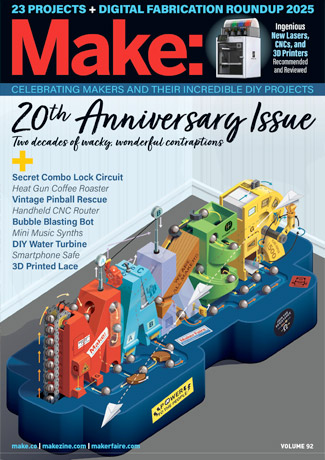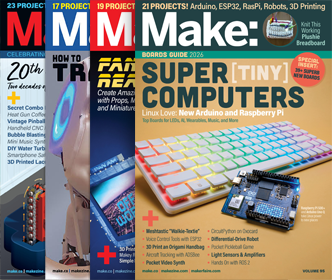
Tips of the Week is our weekly peek at some of the best making tips, tricks, and recommendations we’ve discovered in our travels. Check in every Friday to see what we’ve discovered. And we want to hear from you. Please share your tips, shortcuts, best practices, and tall shop tales in the comments below and we might use your tip in a future column.
Spinning Minis
 On Boing Boing this week, I posted a piece about improving one’s skill at painting fantasy gaming miniatures. This led to a lively discussion on the Boing Boing BBS on mini painting. In the midst of this, Make: contributor Stefan Jones shared a great tip. Anyone who’s serious about painting minis knows that you need to wash them before painting them to get off any residual mold release agents and grease from your hands that you may have deposited while assembling the figure. Stefan uses an old salad spinner to do this. A few drops of liquid soap, some warm water, a gentle spin, and your minis are ready to air dry and paint.
On Boing Boing this week, I posted a piece about improving one’s skill at painting fantasy gaming miniatures. This led to a lively discussion on the Boing Boing BBS on mini painting. In the midst of this, Make: contributor Stefan Jones shared a great tip. Anyone who’s serious about painting minis knows that you need to wash them before painting them to get off any residual mold release agents and grease from your hands that you may have deposited while assembling the figure. Stefan uses an old salad spinner to do this. A few drops of liquid soap, some warm water, a gentle spin, and your minis are ready to air dry and paint.
Basic Darning and Mending

Tool of the Day

The Safety Pin as Multitool
 John Park sent me a quick phonecam video extolling the virtues of keeping various sizes of safety pins handy in the shop. They offer a thousand uses whenever you need a sharp, pointy bit, for poking, picking, scrapping, and the like. And, of course, pinning. And, as John points out, they have a safety cover to protect you from the business end (and even a loop on the other end for hanging on a nail or string). I couldn’t agree more. I use safety pins all of the time, too, as an “ejectrode” (90s slang term for something used to engage the manual eject on a CD/DVD drive), as a reset button-pusher on electronic devices, to unclog my glue applicators, and dozens of other uses. The safety pin might be the ultimately example of what I call a “homely tool,” one that is so common, so un-sexy, and so day-to-day invisible that you barely recognize it as a tool.
John Park sent me a quick phonecam video extolling the virtues of keeping various sizes of safety pins handy in the shop. They offer a thousand uses whenever you need a sharp, pointy bit, for poking, picking, scrapping, and the like. And, of course, pinning. And, as John points out, they have a safety cover to protect you from the business end (and even a loop on the other end for hanging on a nail or string). I couldn’t agree more. I use safety pins all of the time, too, as an “ejectrode” (90s slang term for something used to engage the manual eject on a CD/DVD drive), as a reset button-pusher on electronic devices, to unclog my glue applicators, and dozens of other uses. The safety pin might be the ultimately example of what I call a “homely tool,” one that is so common, so un-sexy, and so day-to-day invisible that you barely recognize it as a tool.
Inline Resistors Save Space on Breadboard
I ran across a link to this gem while poking around in the Make: archives this week. Dave Cook from Robot Room: Through-hole resistors can take up considerable space on a solderless breadboard or circuit. Fortunately, these resistors often provide a convenient path for signals to pass underneath. But occasionally, resistors simply take up precious space and complicate the routing of signals. The 7447 chip (seen here) drives current to the numeric LED. But, the LED segments need resistors to protect them against too much current. In this case, one end of each resistor is pushed into the solderless breadboard, while the other end of each resistor has a wire soldered to it. The other end of the wire connects to the appropriate LED segment.”
Bulldog Clips as Clamps

More on Tool ID Marks

ADVERTISEMENT






